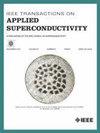Advanced Design for the WIQ Magnet With Steering Corrector Function
IF 1.7
3区 物理与天体物理
Q3 ENGINEERING, ELECTRICAL & ELECTRONIC
引用次数: 0
Abstract
The Facility for Rare Isotopes Beams (FRIB) delivers heavy-ion primary beams at energies of up to 300 MeV/u at 10 kW of beam power to generate rare isotope beams for experiments and will eventually operate at beam power of 400 kW. The preseprator of the Advanced Rare Isotope Separator (ARIS) is equipped with six warm-iron quadrupole (WIQ) singlets and two dipoles integrated right after the production target. They have a compact structure and operate in a high radiation vacuum environment within a hot cell having remote handling capabilities for installation and maintenance. Due to asymmetry with respect to the quadrupole poles, nested sextupole excitations in WIQs induce vertical dipoles that offset the centroid trajectory; Magnet misalignments also result in trajectory offsets. Such offsets degrade separator performance but can be minimized by changing the current distribution on sextupole and octupole coils. In this work, we show how modifications to the WIQ coil design can allow superimposed dipole fields to be included to the octupole and sextupole windings, as well as addition of dipole components by splitting coil currents over groups with separator power supplies. Adjusting the group currents can cancel the sextupole-induced vertical dipole component which can be as high as 0.012 Tm. Octupole coil changes may superimpose a horizontal dipole integrated strength as high as 0.0332 Tm. Unwanted higher harmonics induced as a side effect of the new design are kept to a minimum such that separator performance is preserved as much as possible.稀有同位素束设施(FRIB)以 10 千瓦的束流功率提供能量高达 300 MeV/u 的重离子初级束流,为实验生成稀有同位素束,最终将以 400 千瓦的束流功率运行。先进稀有同位素分离器(ARIS)的前置器配备有六个暖铁四极子(WIQ)单极子和两个偶极子,集成在生产靶之后。它们结构紧凑,在热室的高辐射真空环境中运行,具有远程安装和维护能力。由于与四极极不对称,WIQ 中的嵌套六极激磁会产生垂直偶极子,从而偏移中心轨迹;磁体错位也会导致轨迹偏移。这种偏移会降低分离器的性能,但可以通过改变六极子和八极子线圈上的电流分布将偏移降至最低。在这项工作中,我们展示了如何通过修改 WIQ 线圈设计,在八极子和六极子绕组中加入叠加偶极子场,以及如何通过分离器电源将线圈电流分成若干组来增加偶极子分量。调整组电流可消除六极子引起的垂直偶极子分量,该分量可高达 0.012 Tm。八极线圈的变化可叠加高达 0.0332 Tm 的水平偶极子综合强度。作为新设计的副作用,不必要的高次谐波被控制在最低水平,从而尽可能保持分离器的性能。
本文章由计算机程序翻译,如有差异,请以英文原文为准。
求助全文
约1分钟内获得全文
求助全文
来源期刊

IEEE Transactions on Applied Superconductivity
工程技术-工程:电子与电气
CiteScore
3.50
自引率
33.30%
发文量
650
审稿时长
2.3 months
期刊介绍:
IEEE Transactions on Applied Superconductivity (TAS) contains articles on the applications of superconductivity and other relevant technology. Electronic applications include analog and digital circuits employing thin films and active devices such as Josephson junctions. Large scale applications include magnets for power applications such as motors and generators, for magnetic resonance, for accelerators, and cable applications such as power transmission.
 求助内容:
求助内容: 应助结果提醒方式:
应助结果提醒方式:


